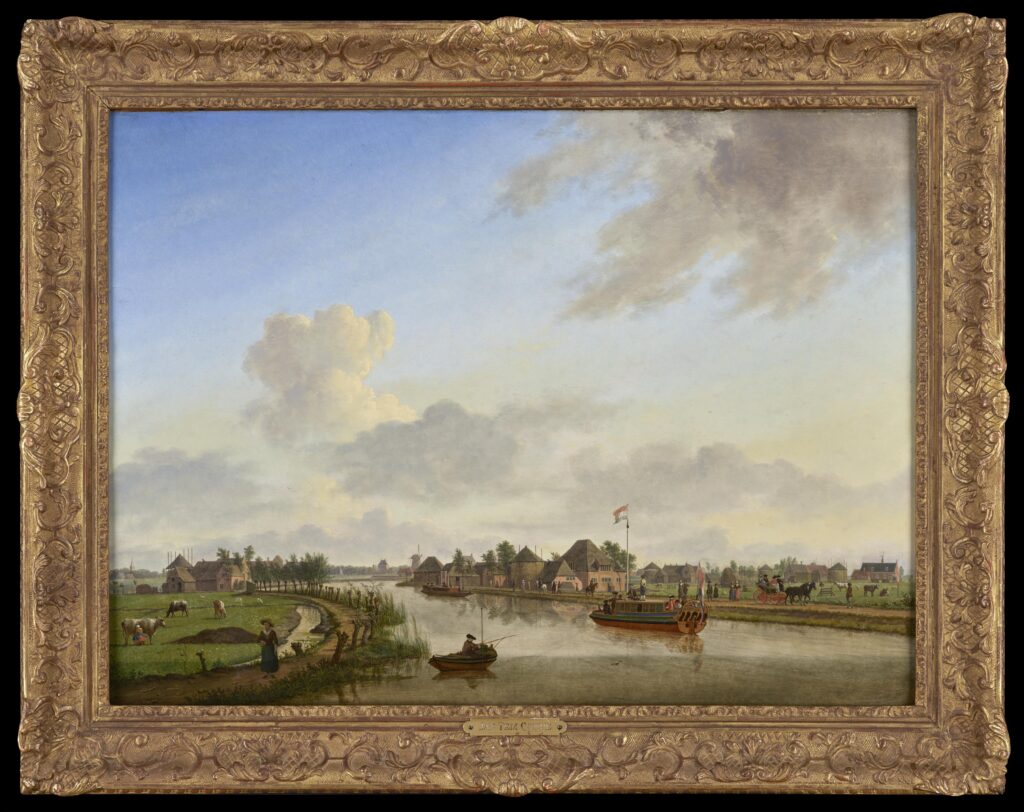Jan Ten Compe
1713 - 1761
A View of the Amstel near the Town of Ouderkerk

Medium:
Oil on Panel
Category:
Dimensions:
46(h) x 62.3(w) cms
Framed Dimensions:
73.5(h) x 58(w) cms
Signed:
Signed and dated lower left: J. Ten Compe. f. 1753
Essay:
One of the most successful Dutch naturalistic architectural and topographical painters of the eighteenth-century, Jan Ten Compe was lauded by collectors and patrons for his astute observations and detailed depictions of Dutch cities, towns and buildings. Although he received his formal artistic training from the decorative wallpaper and landscape painter Dirck Dalens the Younger (1688-1753), Ten Compe was particularly inspired by the seventeenth-century artist Jan van der Heyden (1637-1712), one of the leading architectural painters of the Dutch Golden Age on a par with Gerrit Berckheyde (1638-1698).
In 1736, Ten Compe was made a formal burgher of Amsterdam and, as an independent artist, he received several commissions from a number of esteemed patrons, including Gerrit Braamcamp (1699-1771). Braamcamp’s collection of 380 Dutch paintings was one of the finest ever assembled. Ten Compe appears to have been employed by several prominent local collectors, van de Velde and Ryneveld, amongst others. With this vital support, the artist produced some of the most sophisticated topographical views of Dutch cities in the Low Countries including Haarlem, The Hague and Utrecht. Indeed, when he took up residence in the Hague, one of his many town council commissions was to paint the pavilion that was erected at The Hague to celebrate the signing of the peace of Aachen in 1748.
-
The Amstel, a river located in the province of North Holland in the Netherlands, is the principal subject of this topographical scene. Depicted under a vast sky, which dominates the composition, this painting recalls the great landscapes of the Dutch Golden Age by artists such as Jacob van Ruisdael (1628-1682) and Jan van Goyen (1596-1656). As the river recedes into the distance, our eye is drawn towards a view of a windmill on the horizon. This is De Zwaan (the Swan). Built around 1638 it is one of the key monuments in the Dutch town of Ouderkerk. The Amstel provided the key network between Ouderkerk and the Dutch capital, Amsterdam.
This river has been the subject of fascination for generations of artists, including Aert van der Neer (1603-1677) and Rembrandt (1606-1669). Ten Compe’s painting provides an important record of this view of the Amstel and is vibrant with different forms of cultural life, including depictions of livestock, fishing, and individuals conversing. With the billowing Dutch flag as a key focal point, Ten Compe’s painting is a celebration of the Amstel as a symbol of Dutch culture and as a vital source of livelihood.
Provenance:
Private collection, France